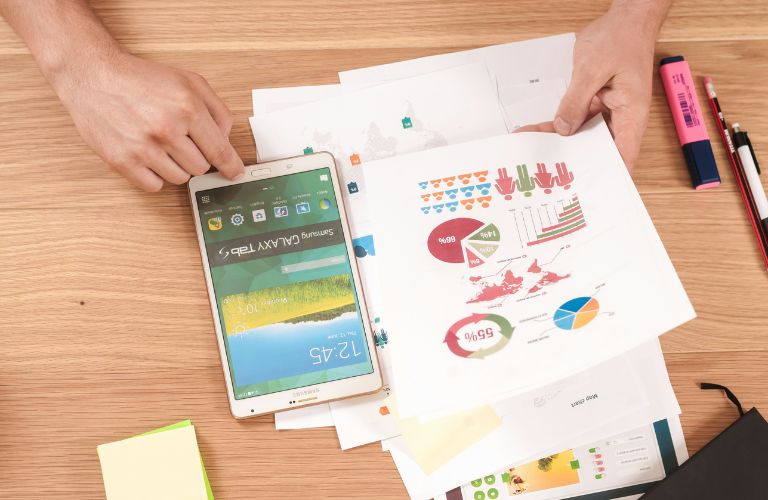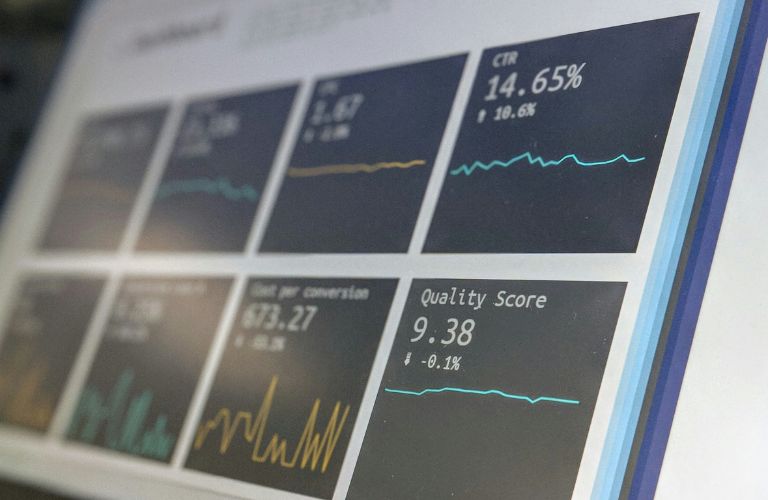Understanding the Basics of Digital Marketing Funnel
The digital space is evolving at a rapid pace. Businesses constantly seek innovative strategies to attract and convert leads. At the heart of these efforts lies a powerful and systematic approach known as the Digital Marketing Funnel. This comprehensive blog aims to demystify the digital marketing funnel, providing an in-depth look at its stages and how it can be leveraged to optimize lead attraction and conversion.
Whether you’re a seasoned marketer or new to the field, understanding the basics of the digital marketing funnel can transform your marketing efforts, streamline your processes, and significantly boost your return on investment (ROI). Let’s explore the essential components of this crucial marketing tool and uncover the strategies that can propel your business to new heights.
What is a Marketing Funnel?
A marketing funnel is a conceptual model that outlines a potential customer’s (a prospect) journey from the initial awareness of a product or service to the final conversion. It helps marketing teams plan and measure their efforts to attract, engage, and convert prospects through content and marketing materials, such as landing pages and ads. The funnel is divided into different stages, each serving a unique purpose in guiding prospects towards conversion.
Traditionally, marketing funnels are based on the AIDA model: Awareness, Interest, Desire, and Action. This model has evolved, and many businesses now use a simplified three-stage model: Top of the Funnel (TOFU), Middle of the Funnel (MOFU), and Bottom of the Funnel (BOFU). Additionally, some funnels include stages like ‘loyalty’ and ‘advocacy’ to reflect the entire customer journey.

The Three Stages of the Marketing Funnel
Understanding the three broad stages of the marketing funnel is crucial for creating an effective digital marketing strategy. These stages are:
- Top of the Funnel (TOFU): Awareness
- Middle of the Funnel (MOFU): Consideration
- Bottom of the Funnel (BOFU): Conversion
Top of the Funnel: Awareness
The top of the funnel (TOFU) is where prospects first become aware of your brand. At this stage, they may not know much about your product or service, so the focus is on creating content and marketing materials that promote brand awareness.
Possible Strategies for TOFU:
- Educational Content: Create blog posts, videos, and infographics that educate potential customers about concepts related to your product or service. This helps establish your brand as an authority in your industry.
- SEO and Paid Ads: Use search engine optimization (SEO) techniques and paid advertisements to increase your brand’s visibility on search engines and social media platforms.
- Social Media Engagement: Share posts on social media that highlight your unique selling proposition (USP) and engage with your audience through comments and messages.
Middle of the Funnel: Consideration
Once prospects engage with your brand in a meaningful way, they enter the middle of the funnel (MOFU). At this stage, the goal is to nurture these leads, build trust, and set your brand apart from competitors.
Possible Strategies for MOFU:
- Valuable Content: Provide articles, white papers, and case studies that answer questions and solve problems for your potential customers.
- Surveys and Feedback: Invite prospects to participate in surveys to understand their needs better and tailor your offerings accordingly.
- Segmented Landing Pages: Create landing pages specific to different customer segments to address their unique needs and pain points.

Bottom of the Funnel: Conversion
The bottom of the funnel (BOFU) is the final stage before prospects convert into customers. By this point, you have captured their attention, built trust, and fostered a relationship.
Possible Strategies for BOFU:
- Trials and Demos: Offer free trials or demos so prospects can experience your product or service firsthand.
- Social Proof: Share customer reviews, testimonials, and success stories to build trust and reassure prospects of your product’s value.
- Personalized Content: Use personalized email campaigns and on-site surveys to address any remaining doubts or objections and encourage conversions.
The strategies for TOPU, MOFU, and BOFU are not fixed. They can be modified or interchangeable based on the nature of your business and your working style.
[Extra read: How to Easily Understand the 6 Ps of Marketing Mix]
The Nonlinear Nature of Marketing Funnels
While the traditional funnel model is linear, real-life buying behavior is often nonlinear. Prospects may not always enter the funnel at the top and progress step by step. Some may jump directly to the middle or bottom of the funnel based on their prior knowledge and readiness to purchase. Understanding this nonlinear nature is crucial for creating a flexible and responsive marketing strategy.
The Digital Marketing Funnel
The digital marketing funnel is an extension of the traditional marketing funnel, tailored to the digital landscape. It encompasses six stages:
- Exposure
- Discovery
- Consideration
- Conversion
- Customer Relationship
- Retention
Each stage involves specific strategies and content types to attract, engage, and convert leads.
Exposure
The exposure stage is about making potential customers aware of your brand. This is achieved through advertising and promoting your brand on the right platforms.
Possible Strategies for Exposure:
- SEO and Paid Ads: Use SEO techniques and paid advertisements to ensure your brand appears prominently in search results.
- High-Traffic Content: Create content that captures attention, such as educational videos and infographics, to attract a large audience.
Discovery
In the discovery stage, the goal is to engage users interested in your brand and encourage them to learn more about your products or services.
Possible Strategies for Discovery:
- Lead Magnets: Offer valuable content, such as ebooks or webinars, in exchange for contact information.
- Engaging Content: Create blog posts and social media content that highlight the benefits of your products or services and encourage further exploration.
Consideration
At the consideration stage, prospects are aware of their problem and your solution. The focus is on providing content that helps them evaluate your offerings.
Possible Strategies for Consideration:
- Case Studies and Testimonials: Share real-life examples and customer testimonials to demonstrate the effectiveness of your products or services.
- Detailed Guides: Provide comprehensive guides and FAQs that address common questions and concerns.

Conversion
The conversion stage is where prospects make the final decision to purchase. The goal is to remove any remaining barriers and encourage them to take action.
Possible Strategies for Conversion:
- Personalized Offers: Use targeted email campaigns and personalized content to address specific needs and objections.
- Free Trials and Demos: Offer free trials or demos to let prospects experience the value of your product firsthand.
Customer Relationship
After conversion, the focus shifts to building a strong relationship with your customers. This involves providing ongoing support and value to ensure customer satisfaction and loyalty.
Possible Strategies for Customer Relationship:
- Onboarding Content: Provide tutorials, guides, and support materials to help customers get the most out of your product.
- Email Campaigns: Use drip email campaigns to educate customers about additional features and benefits.
Retention
Retention is about keeping customers engaged and encouraging repeat purchases. This involves monitoring customer satisfaction and continually providing value.
Possible Strategies for Retention:
- Regular Check-ins: Conduct regular check-ins and surveys to understand customer needs and address any issues.
- Exclusive Content: Offer exclusive content, discounts, and promotions to keep customers engaged and loyal.

The Importance of a Digital Marketing Funnel
A digital marketing funnel is essential for several reasons.
- Better Segmentation: It allows for better segmentation of marketing actions, directing content and ads to the right audience at the right time.
- Increased Efficiency: By targeting specific stages of the funnel, marketing efforts become more efficient, delivering qualified leads to the sales team and making conversion easier.
- Improved Customer Journey: Understanding the customer journey allows businesses to create relevant and timely content, improving the overall customer experience.
- Resource Optimization: A well-defined funnel ensures that resources are used effectively, avoiding waste on ineffective actions.
Creating an Effective Digital Marketing Funnel
Creating an effective digital marketing funnel involves several steps.
- Set Clear Goals: Define clear goals for your marketing actions, such as increasing sales or ROI.
- Structure the Funnel: Visualize the stages of the funnel and define the steps in your sales cycle.
- Generate Traffic: Implement strategies to drive traffic to each stage of the funnel.
- Tailor Content: Create content tailored to the needs and knowledge level of your audience at each stage.
Best Types of Content for Each Stage of the Funnel
Different stages of the funnel require different types of content. Though the type of content for each stage is not set in stone, these are some of the best ones.
- Exposure: Educational videos, infographics, SEO-optimized blog posts.
- Discovery: Lead magnets, engaging blog posts, social media content.
- Consideration: Case studies, testimonials, detailed guides.
- Conversion: Personalized offers, free trials, demos.
- Customer Relationship: Onboarding content, drip email campaigns.
- Retention: Regular check-ins, exclusive content, promotions.
Understanding the Basics of the Digital Marketing Funnel Can Help You Analyze, Learn, and Strategize for Lead Conversion Effectively and Efficiently.
The digital marketing funnel is a powerful tool for attracting and converting leads. By understanding its stages and implementing tailored strategies, businesses can create effective marketing campaigns that guide prospects through the entire customer journey. With a well-defined digital marketing funnel, businesses can optimize their resources, improve customer satisfaction, and achieve their marketing goals.

Understanding and utilizing the digital marketing funnel can significantly enhance your marketing efforts, leading to increased conversions and long-term customer relationships. Start creating your digital marketing funnel today and watch your business grow.
[Also read: 5 Ways Good Content Improves User Experience]

